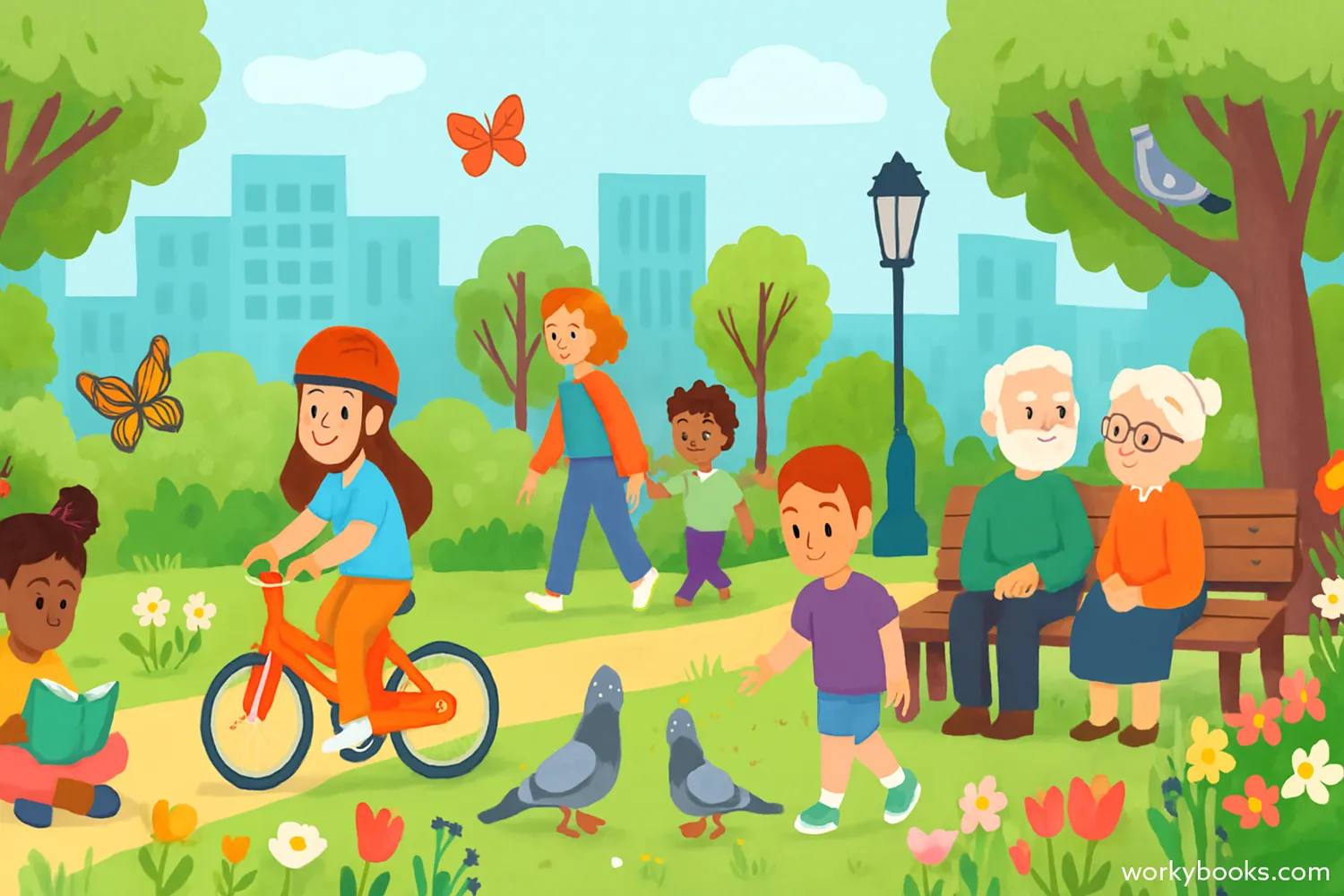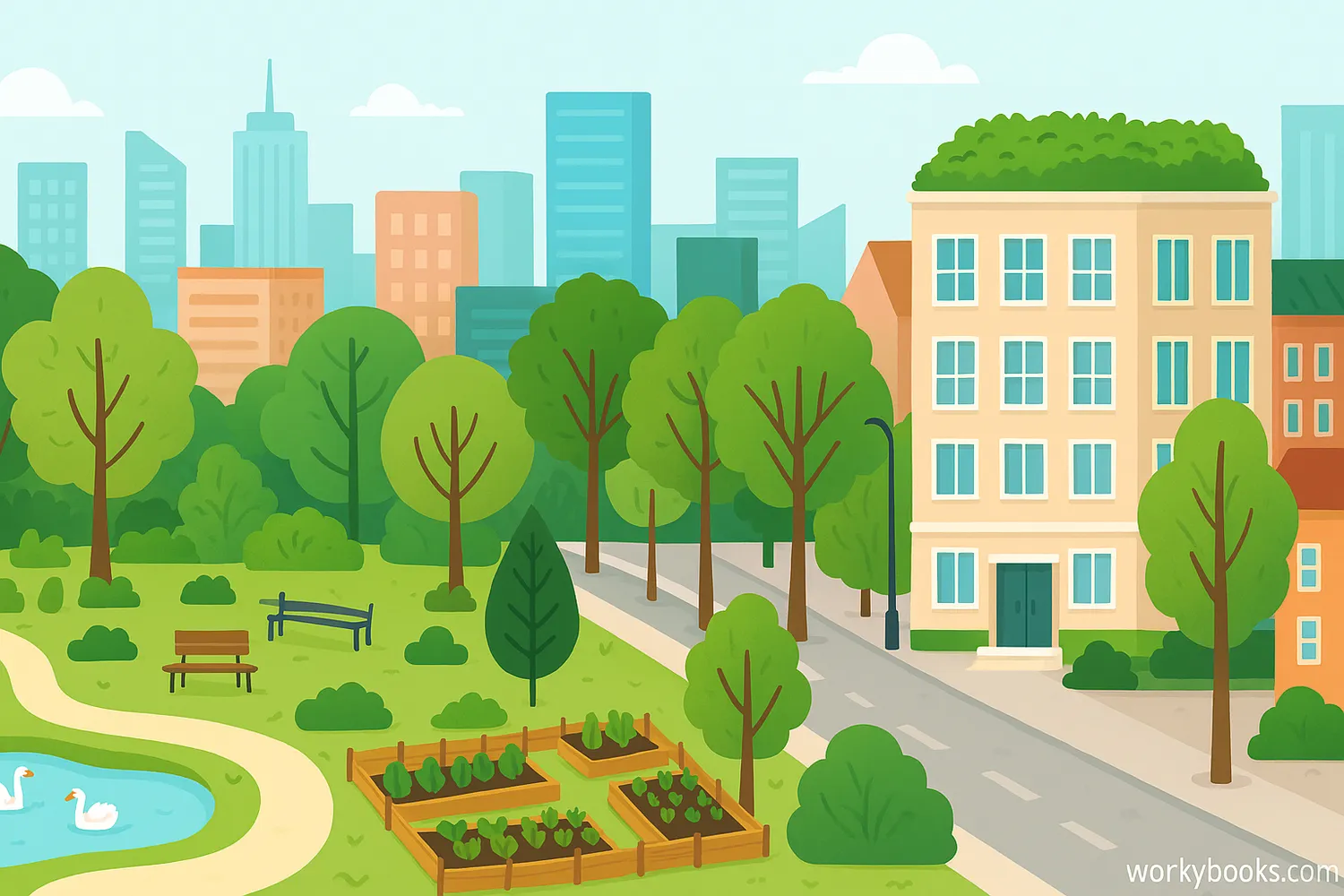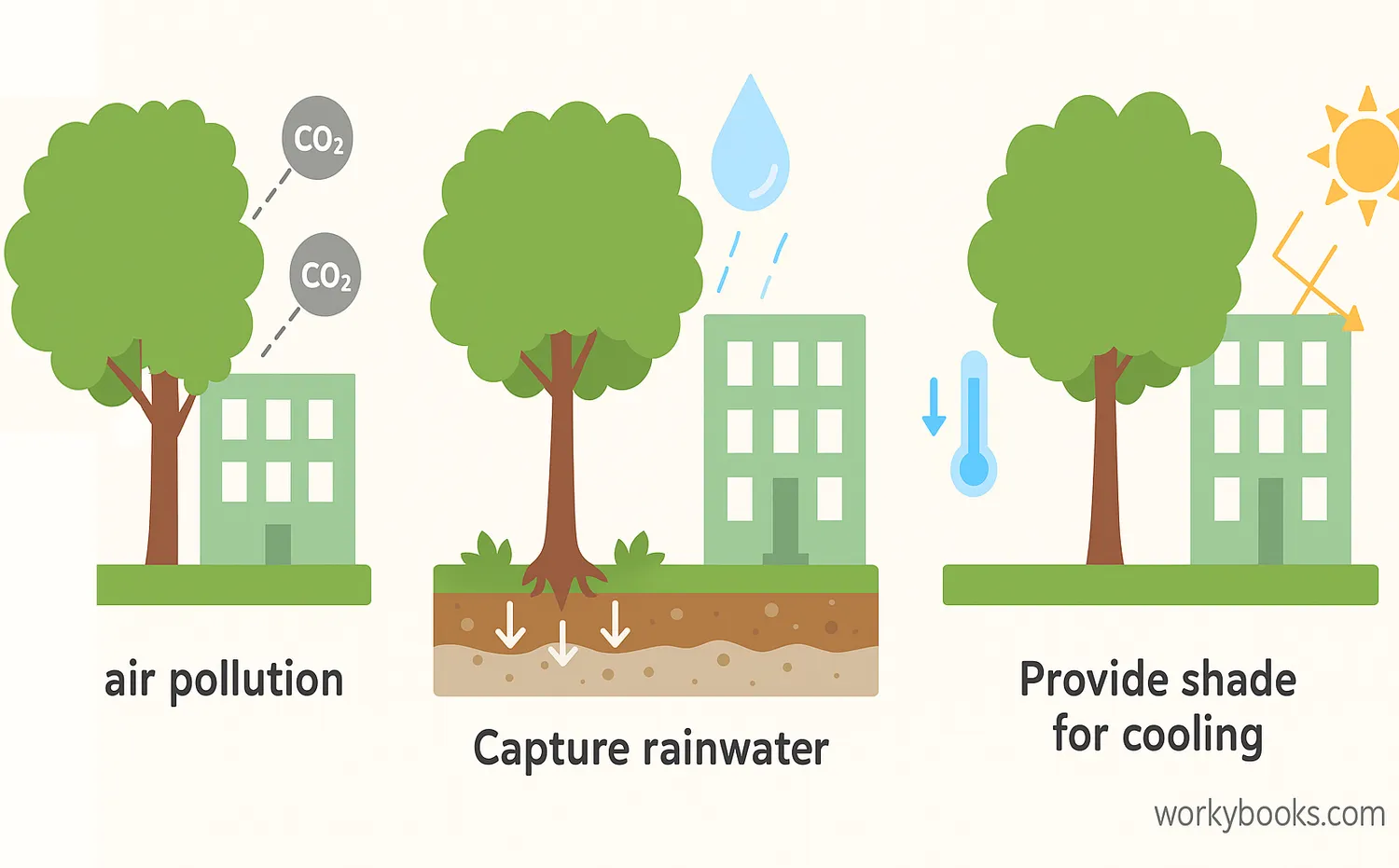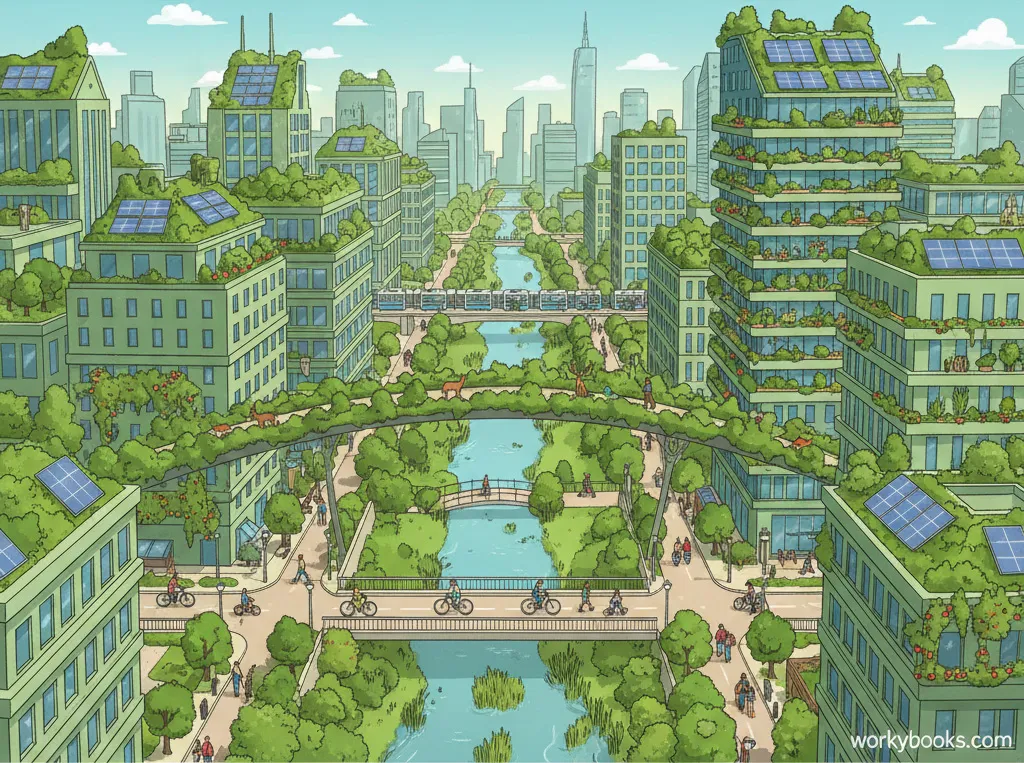Urban Biodiversity - Definition, Examples, Quiz, FAQ, Trivia
Discover how nature thrives in cities and why it matters
What is Urban Biodiversity?

Urban biodiversity is the variety of living things found in cities and towns. It includes all the plants, animals, fungi, and microorganisms that live alongside people in urban areas.
Key facts about urban biodiversity:
• Cities can support many different species if we create the right habitats
• Parks, gardens, and even small green spaces help wildlife survive
• Urban biodiversity makes cities healthier and more enjoyable
• Even common city animals like pigeons and squirrels are part of urban biodiversity
Think of your city or town as a special kind of ecosystem. Just like forests or oceans, urban areas have their own mix of living things that have adapted to live near people.
Key Concept
Urban biodiversity refers to the variety of life forms that coexist with human populations in cities and towns, including plants, animals, insects, and microorganisms that have adapted to urban environments.
Birds
Pigeons, sparrows, and other city birds
Trees
Street trees, park trees, and garden plants
Insects
Bees, butterflies, and other pollinators
Mammals
Squirrels, raccoons, and other urban wildlife
Urban Green Spaces

Urban green spaces are areas in cities that are partly or completely covered with vegetation. These spaces are essential for supporting biodiversity in urban environments.
Types of urban green spaces:
• Parks: Large areas with grass, trees, and sometimes water features
• Gardens: Both public and private gardens with diverse plants
• Green roofs: Rooftops covered with plants that provide habitat
• Street trees: Trees planted along sidewalks and roads
• Community gardens: Shared spaces where people grow food and flowers
These green spaces act like "islands" of habitat where wildlife can find food, shelter, and places to raise their young. When these spaces are connected, they form "green corridors" that allow animals to move safely through the city.
Habitat Fragmentation
In cities, natural habitats are often broken into small pieces by roads and buildings. This is called habitat fragmentation. It can make it difficult for wildlife to find mates and resources. Creating connected green spaces helps solve this problem.
Ecosystem Services in Cities

Ecosystem services are the benefits that nature provides to people. In cities, these services are especially important for our health and well-being.
Important urban ecosystem services:
• Air purification: Plants filter pollutants from the air we breathe
• Temperature regulation: Trees provide shade and cool cities
• Water management: Green spaces absorb rainwater and reduce flooding
• Noise reduction: Plants help absorb sound in noisy urban areas
• Mental health benefits: Access to nature reduces stress
These services help make cities more livable. For example, trees can reduce air temperatures by up to 9°F (5°C) through shade and evaporation, making hot summer days more comfortable.
Air Purification
Urban trees remove pollutants like ozone and particulate matter from the air
Cooling Effect
Plants provide shade and release water vapor that cools urban areas
Water Management
Green spaces absorb rainwater, reducing flooding and cleaning water
Health Benefits
Access to nature reduces stress and improves mental health
Sustainable Cities and Conservation

Sustainable cities are designed to support both people and nature. They use green infrastructure and conservation strategies to protect and enhance urban biodiversity.
Strategies for urban conservation:
• Green infrastructure: Using natural systems like parks and green roofs instead of only concrete and pipes
• Wildlife-friendly design: Creating buildings and spaces that provide habitat
• Native planting: Using local plant species that support local wildlife
• Reducing pesticides: Using natural methods to manage pests
• Community involvement: Engaging residents in conservation efforts
When we design cities with nature in mind, we create healthier environments for both people and wildlife. This includes everything from building bird-friendly windows to creating wildlife corridors that connect habitat fragments.
Human-Wildlife Interactions
In cities, people and wildlife live close together. This can create challenges when animals like raccoons get into trash or deer eat garden plants. Learning to coexist peacefully with urban wildlife is an important part of urban biodiversity conservation.
Urban Biodiversity Quiz
Test your knowledge of urban biodiversity with this 5-question quiz. Choose the correct answer for each question.
Frequently Asked Questions
Here are answers to common questions about urban biodiversity:
Science Trivia
Discover amazing facts about urban biodiversity:
Adaptable City Birds
Some city birds have evolved to be different from their country relatives. Urban songbirds often sing at a higher pitch to be heard over city noise, and some have developed shorter wings to be more maneuverable around buildings.
Green Roof Benefits
Green roofs can reduce building energy costs by up to 30% by providing insulation. They also absorb rainwater, reduce urban heat island effect, and provide habitat for birds and insects in dense urban areas.
Urban Pollinators
Some studies have found that cities can support more diverse bee populations than surrounding agricultural areas. This is because urban gardens often provide a wider variety of flowers throughout the growing season.
Economic Value
Urban trees in the United States provide approximately $18.3 billion in annual benefits through air pollution removal, reduced energy costs, carbon sequestration, and improved water quality.

